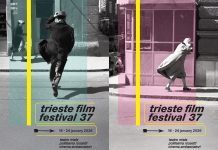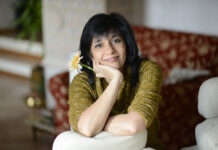by Nina Vaclavikova
Interviews: Enrico Calesso – Principal Conductor and Music Director, Giuliano Polo – Superintendent of the Teatro Verdi
Teatro Lirico Giuseppe Verdi will open its 2025–26 opera and ballet season with an unusually unified project: two new productions centered on one of opera’s most enduring figures, Figaro. Announced on Wednesday ahead of their late-November premieres, Gioachino Rossini’s Il Barbiere di Siviglia and Wolfgang Amadeus Mozart’s Le Nozze di Figarowill be presented in alternating performances, allowing audiences — including those traveling from neighboring regions and countries — to see both works over the course of a single weekend.
The initiative marks the true Trieste debut of Pier Luigi Pizzi, the celebrated Italian director, designer, and long-time force on the international opera stage. Pizzi leads both stagings, supported by Massimo Pizzi Gasparon Contarini as assistant director and lighting designer, Serena Rocco for sets, and Lorena Marin for costumes. Enrico Calesso will conduct both productions, with Paolo Longo directing the chorus. The Teatro Verdi’s orchestra, chorus, and technical staff are responsible for the entirely new in-house productions.
The theater’s management described the season launch as a moment of momentum: subscriptions for the symphonic series have risen sharply, while opera subscriptions — still open until December 12 — are also reporting significant growth.
A Season Built Around a Revolutionary Archetype
The programming concept traces its roots to the theatrical trilogy of Pierre-Augustin Caron de Beaumarchais, who created Figaro as a sharp-witted observer and critic of the social inequality of his time. His plays — Il Barbiere di Siviglia, Le Nozze di Figaro, and La mère coupable — positioned Figaro as a spokesperson for those living under oppressive hierarchies. The character’s popularity quickly crossed into opera, inspiring numerous composers. Teatro Verdi selected Rossini’s and Mozart’s treatments, among the most influential interpretations of the figure, to explore this historical and cultural shift between the late 18th and early 19th centuries.
The creative challenge for Pizzi and his team lies in crafting two independent productions that nonetheless converse with each other in tone, style, and dramatic continuity. Pizzi, whose recent work has often focused on Baroque opera, is approaching this more familiar repertoire with what he describes as a renewed artistic impulse.
In a joint artistic statement, Pizzi and Pizzi Gasparon Contarini emphasized the visual clarity guiding both stagings. “The scenography is a living part of the performance,” they noted, “and must convey — in a stylized and pure way — a place of the soul, a space of memory that evokes both joy and melancholy. In Mozart, as in Rossini, there must always be expression rather than imitation, because the neoclassicism of the music requires visual clarity and logic.”
Casting and Performance Schedule
Rossini’s Il Barbiere di Siviglia will feature Alessandro Luongo as Figaro, Annalisa Stroppa as Rosina, and Marco Ciaponi as Count Almaviva. Marco Filippo Romano (Bartolo), Abramo Rosalen (Basilio), and Anna Maria Chiuri (Berta) lead the supporting cast. The opera will be performed in Trieste from November 28 through December 13, with an additional performance in Udine on December 20.
Mozart’s Le Nozze di Figaro will star Simone Alberghini as Figaro, Carolina Lippo as Susanna, Ekaterina Bakanova as the Countess, and Giorgio Caoduro as Count Almaviva. Paola Gardina appears as Cherubino, with Anna Maria Chiuri returning in the role of Marcellina. Performances are scheduled between November 29 and December 14.
Aiming for a Broader Cultural Reach
Teatro Verdi’s leadership sees the paired productions not only as a tribute to one of opera’s most iconic characters but also as an opportunity to reinforce Trieste’s role as a cultural crossroads — a city historically shaped by Italian, Central European, and Slavic influences. By aligning two major operas into a single thematic arc and offering a schedule conducive to weekend cultural tourism, the theater hopes to draw a wider, more international audience.
The season’s opening suggests an institution intent on pairing tradition with innovation, presenting timeless works with fresh staging while positioning Trieste as a destination for opera-driven travel.






























